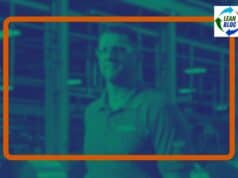Food Banks Go Hungry – WSJ.com ($$)
This is something I blogged about in August 2005 (with a link then to Joe Ely's blog), now the WSJ had an article yesterday.
Nationwide, food banks — clearinghouses that distribute food donations to local charitable pantries and emergency shelters — report receiving fewer donations in the form of imperfectly packaged canned and boxed edibles.
It is the down side of a drive in recent years by manufacturers and retailers for greater supply-chain efficiency. Toward that end, many food manufacturers began producing food in quantities more closely tailored to individual retail customers' needs. That in turn has reduced the amount of food that gets sold to retailers and ultimately returned to the manufacturers.
Instead of relying on excess inventory or misprinted boxes, food banks will have to rely more on direct cash donations so they can buy food. It would be nice if the companies that used to donate, but made improvements, would donate a percentage of that cost savings to the food banks in lieu of the direct donation of defective (but edible) products. Even then, the food banks still might not end up with as much food.
This made me wonder, what came first, the food waste or the food bank?
According to Wikipedia, the first “food bank” was started in Phoenix in 1967. It turns out that the food bank concept was created to handle the waste and excess in the food supply chain (link to St Mary's history):
In his forties, in 1965, van Hengel started volunteering at St. Vincent de Paul, collecting donations for the community dining room. After learning that grocery stores disposed of food that was, either, nearing expiration or had small tears or dents in the packaging, van Hengel began persuading store managers to donate this “edible, but unsalable” food to St. Vincent de Paul. Soon, van Hengel was receiving more food than the one dining room could use.
If the waste had never been there, food banks, in their current form, might not have ever existed.
Please scroll down (or click) to post a comment. Connect with me on LinkedIn.
If you’re working to build a culture where people feel safe to speak up, solve problems, and improve every day, I’d be glad to help. Let’s talk about how to strengthen Psychological Safety and Continuous Improvement in your organization.








